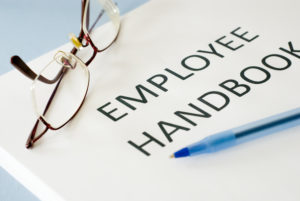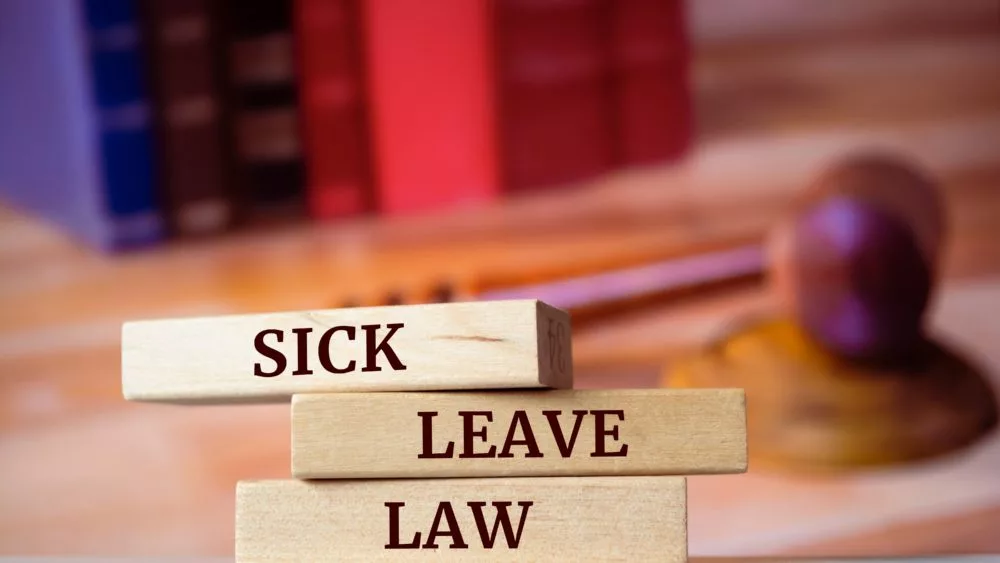With approximately 130 employees, Healdsburg-based Costeaux French Bakery is considered a small employer. Changes in employment law, and specifically for paid sick leave, have altered the way its president and CEO Will Seppi structures time off for his numerous workers. In 2015, when a California law was implemented granting employees three paid sick days per year, or 24 hours, Seppi transitioned away from the paid time off (PTO) model he had been using, and divided wages into a sick day “bucket” and a vacation day bucket.
Now with a new five-day sick leave law that rolled out Jan. 1, employers such as Seppi are adapting to the ins and outs of being in compliance. “This new sick leave law applies to all of our employees, regardless of whether they are full-time or part-time,” Seppi says.
Another small employer in the wine industry, who asked not to be identified, says the new five-day sick leave law will have a big impact on their business, which employs approximately 10 workers, a mix of full-timers and part-timers. “It’s a difficult topic to wrap your head around, from a business standpoint,” the manager says. “We used a PTO model in 2023, but that has changed for 2024. We now offer a sick ‘bank’ and a vacation bank for our full-time employees.”
It’s a touchy subject, they add. “In the wine industry I don’t know if this is the typical way to go, but for our company it’s the most beneficial financially. When we explained the new sick leave law to our workers they were fine with it. There were no serious issues, other than the challenge of explaining it to those whose second language is English.”
COVID versus a cold
Human resources specialists interviewed for this article tend to agree that the COVID pandemic significantly altered the way employers and employees view sick days. “It used to be that, with some people, if they had a cold they came to work anyway, but COVID changed all that,” says Tracy Emmerich, senior human resources consultant for Leap Solutions Group, a business-management consulting company based in Santa Rosa. “You don’t know what virus you really have and you don’t want to make the whole office sick. Now, with so much remote and hybrid work, people under the weather with a simple cold can work from home. Employers don’t want sick people at work, but if they don’t get paid sick days, they may come in anyway.”

Emmerich says implementing the new five-day sick leave law depends on many factors, and it also has to do with a company’s culture. “Three days of sick leave wasn’t enough. If the expectation is that an employee should be at work every day, a lot of people would feel guilty if they called in sick. But post-COVID, your coworkers don’t want you there. Sick leave was to give part-time temporary employees sick days, and that’s where this started way back when. If they worked at least 30 days, they were entitled to sick days.”
Leap Solutions partner Chuck McPherson says he’s not against employees of his clients receiving the additional sick leave time, but for smaller employers it can create hardships. “Everybody knows that doing business is California is tough, and a new law like this is tough on small businesses. In today’s employment environment workers are taking whatever perks they can get. We tend to see with our client companies that employees don’t bank their earned days off, they actually use them. And that can be a good thing––they go rest and relax.”
Small employers challenged
Most employers admit that they don’t want employees coming to work sick, explains Lisa Lichty, CEO of Star Staffing in Santa Rosa. “So if a little more sick pay will help keep sick employees home to rest, that’s great. But there are many mixed feelings about this new sick leave law. Employers are concerned about the increased cost and also about employees who might abuse the sick pay.”
Golbou ghassemieh, operations manager and senior consultant with Santa Rosa-based Personnel Perspective, says she doesn’t hear about older employees in their client companies “working through” their illness in the office. “It’s not a badge of honor to report to work sick,” says ghassemieh, who spells her name all lowercase. “We all went through the pandemic and everyone’s mindset has changed since then. It’s true that the older generation of workers came up in their careers at a time with more limited benefits and perks. Your reward was that you got paid. Now we live in a different era, and employees are given benefits today that weren’t offered in the past. And yes, some people will abuse the system, using their sick days for the wrong reasons.”

Ghassemieh echoes the words of McPherson. “The biggest challenge with the new sick days policy is for smaller employers, because compliance expectations are hard on them. For larger employers it might not be as difficult to provide more time to their employees, but for others it’s a squeeze. They look at their bottom line and realize that to be compliant they will have to increase costs to customers to pay for that extra income.”
“Excessive leave among their employees is a common concern of my clients,” says Jennifer Krug, a human resources consultant with Wine Country HR. “It’s important for employers to balance both employee rights and business necessity. If excessive sick time is being requested by an employee, attendance issues can have a huge impact on that employer. In that case, employers need to know if an employee is dealing with medical conditions and thus fall into special protected categories. These include the Family Medical Leave Act, California Family Rights Act and the Americans with Disabilities Act––and these may all come into play.”
Less mental health stigma
Mental health also features prominently in today’s work culture, with more younger workers commonly referring to some days off as “mental health” days. “Around 2019, mental health in general and mental health in the workplace was already becoming a more prevalent topic,” says Lichty. “Then with COVID and several other traumatic events of the past few years––political unrest, fires, violence and so forth––mental health was launched to the forefront of our society and workplace topics.”
Not only did mental health become a much more common reason for sick pay or PTO from a medical perspective, but also from a general well-being perspective, says Lichty. “Education around mental health has helped HR professionals and the workforce in general to dismantle the stigma. Most employers and employees now understand the severity and prevalence of mental health issues. Also, whether it’s a truly medically diagnosed mental health matter, or just a matter of well-being, it has been studied and proven that taking ‘mental health’ days improves employees’ overall health and therefore productivity and happiness in the workplace.”

Krug says, “Thankfully, we are all becoming more aware of the need for self-care in all its forms. Employers can actively work to make their workplaces more healthy. Employers of choice are going above and beyond to make their workplaces positive and enjoyable places to be, and to accept that employees have wellness issues outside of work, too. Each one of us is dealing with our own challenges in both our mental and physical health, and that of our families. A couple of extra sick days to ease the burden is nice, but I encourage my client companies to look at it as only a start.”
At his company, Seppi hasn’t heard a request for a mental health day too frequently, but he believes vacation time is always good for mental and physical health. “It’s also beneficial from a business operation standpoint, because when a worker is gone it can point out opportunities to have others in the company rise up and fill in. And you want to make sure you aren’t relying too heavily on a single person. Sometimes we see this leading to managerial changes, and that’s good for the growth of a company.”
The wine industry manager says their company generally doesn’t refer to days off as mental health days. “But I leave it up to my employees how they want to apply their time. By law you can’t ask for any proof of illness, and we highly encourage our workers to use their sick time for medical appointments during working hours.”
When ghassemieh initially entered the workforce, she says a person might have been laughed out of the room if they asked for a “mental health” day. “Now, a younger generation of workers is less impacted by the stigma of having mental health needs, because we talk about it more. There is more parity between mental health and physical health now. I worked at one time when as an HR manager I could ask people why they were home sick. But you can’t do that anymore. You have to take it at face value and have more tolerance, because the legal landscape is different now.”
Update employee handbooks
She says it’s important that employers stay on top of communicating employment law changes to their workers. “So many times companies are behind on updating their employee handbooks. There’s so much to take into consideration now that they need to regularly revisit their policies. Updating the handbook should be an annual exercise,” says ghassemieh.

She says it comes down to employers maintain solid hiring practices and ensuring they bring employees into a positive work culture where they can be engaged and committed to “showing up and doing the work.”
“The most important thing an employer does is smart hiring,” says ghassemieh. “It’s not about the widgets they sell. Employers sometimes don’t understand that, because many times they are just trying to get the work done. We all have a tendency to hire whomever we can to ease our pain quickly, but that hire may bring pain later. Bringing on the wrong person into a company can be more painful than taking a bit more time to find the right one.”
If a company has a toxic, underlying negative culture, says ghassemieh, what is the incentive for employees to remain engaged? “Some workers might decide they should just use their sick leave because they are not getting anything else out of the workplace. How an employer leads impacts the people who work for them. Employers need to pay attention to this, because their personality and their expectations set the tone for everyone who works for them. Workplaces are never perfect, but in a great work environment there is much less bad behavior.”
Krug says it’s vitally important that employers have clear and consistently applied policies. “I realize that is difficult because there have been a lot of changes in COVID safety requirements, which prompted folks to work from home in the first place, and now with the updated sick pay requirements. Employers must decide their stance on the type of employer they want to be—to allow work on-site only, remote-work only or hybrid work. Each of these requires different policies that need to be communicated clearly to the employees.”
Here to stay
In the food production and hospitality environment of Seppi’s bakery and restaurant, he says they deal so much with the general public that he encourages employees to keep themselves healthy “so they can come to work and tend to our guests’ needs.”
“In our line of work it’s gross to spread germs,” he points out.
Adds Seppi: “The new sick leave law is here to stay and we are complying with it, but the extra costs will get passed on to consumers.”






